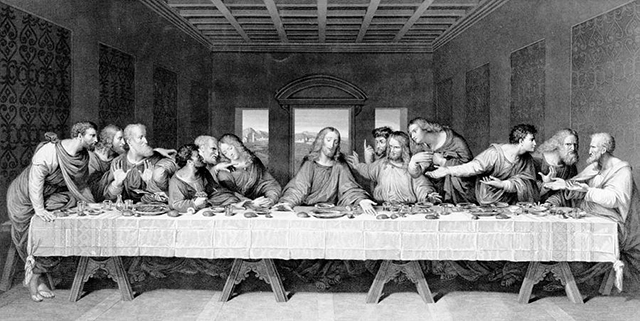Color theory has a ton of definitions! A ton. Artists, painters, illustrators, and designers need to know the Color Wheel in order to succeed. A great freelance storyboard artist not only excites talent, crew, and clients, but also aligns your production departments behind the vision.
There is so much that can be said about Color Theory that it could fill the Library of Alexandria. It can be overwhelming, so for this article, I’m going to give you the underwhelming Cliff’s notes version. Here are a few basic concepts of Color Theory.
In 1666 the genius Sir Isaac Newton put together the first circular diagram of colors. Ever since then, artists and even scientists have studied and created numerous variations of this concept. Over the years much debate has been provoked due to the differences of opinion about the validity of one format over another. In my opinion, any wheel which presents a logically arranged sequence of pure hues is valid.
First a couple of terms you should familiarize yourself with about color.
Hue: is the name of a distinct color of the spectrum-red, green, yellow, orange, blue, and so on.
Tint: is the mixture of a color with white
Shade: is a mixture of a color and black

PRIMARY COLORS
The color wheel is based on red, yellow and blue.
In traditional Color Theory, these are the 3 colors that cannot be mixed by any combination of other colors. All other colors are derived from these 3 hues.
SECONDARY COLORS
Green, orange and purple are the secondary colors.
These are formed by mixing two of the primaries in equal parts. Thus red with yellow gives you orange, blue with yellow gives green, and red and blue give purple.
TERTIARY COLORS
Yellow-orange, red-orange, red-purple, blue-purple, blue-green and yellow-green.
These are formed by mixing a primary and a secondary. That’s why the hue is a two-word name, such as blue-green, red-violet, and yellow-orange.
The primaries are arranged on the color wheel at 3 points opposite each-other and the secondaries in between the two primaries. The tertiary colors are between the primary and secondary colors.
Color Schemes are rules for combining color that gives a harmonious result.
Complementary Scheme:
Colors that are opposite each other on the color wheel are known as complementary. Red and green for example. Using opposing colors create maximum contrast and maximum stability.
The high contrast of complementary schemes create a vibrant look especially when used at full saturation. You need to be careful using this scheme so it is not disturbing.
Complementary schemes are tricky to use in large doses, but work well when you want something to stand out. A Complementary scheme is definitely not recommended for text. If you don’t believe me just check out some people’s crappy ass My Space pages.
Analogous Scheme:
For the Analogous scheme, you use colors that are next to each other on the color wheel. They go well together and create placid designs. Analogous schemes are often found in nature and are harmonious and pleasing to the eye.
Be sure you have enough contrast when choosing an analogous scheme.
One color should dominate, a second to support. The third is used (along with black, white or gray) as an accent.
Split Complementary Color Scheme:
The split Complementary Color Scheme is a variation of the complementary scheme. You choose a base color and use the two colors adjacent to its complement. This has the same strong visual contrast as the complementary color scheme, but has less strain. The split-complimentary color scheme is a good choice for rookie artists because it is hard to screw up.
Triadic Color Scheme:
A triadic color scheme uses colors that are evenly spaced around the color wheel.
Triadic color harmonies tend to be vivid, even if you use pale versions of your hues.
To use a triadic harmony successfully, the colors should be carefully balanced – let one color dominate and use the two others for accent.
COLOR HARMONY
Harmony can be defined as a pleasing arrangement of parts, whether it be music, poetry, or even a gorgeous platter of tacos!
Harmony is something that is pleasing to the eye. It engages the viewer and it creates an inner sense of order and balance in the visual experience. When something is not harmonious, it’s boring or chaotic. The first extreme is a visual experience that is so ordinary, so dull and lackluster, that the viewer is not engaged. Our brains always reject under-stimulating information. I know mine does.
At the other extreme is a visual experience that is so overdone and chaotic that the viewer can’t stand to look at it. Our brains reject what they cannot organize or understand. We need to present a logical structure. Color harmony delivers visual interest and a sense of order which we find comforting and pleasant.
What I’m saying is, extreme unity leads to boredom, extreme complexity leads to over-stimulation. Harmony is a dynamic balance between the two. Like when balance is brought to the force.
Raul Aguirre Jr. Artist, Writer, Animator, Cartoonist, and Podcast Host. He is a 16 year veteran of the animation industry that has worked at Disney, Nickelodeon, and FOX. If this article inspired the artist in you, then check out The Man vs. Art Podcast that Raul hosts at http://www.manvsart.com Art, Animation, and Comics Shenanigans! Inspiration, Information, and Entertainment for Artists! Once you hear the Man vs. Art Podcast you can’t unhear it!
Article Source: http://EzineArticles.com/expert/Raul_Aguirre_Jr/955195
Article Source: http://EzineArticles.com/5986429